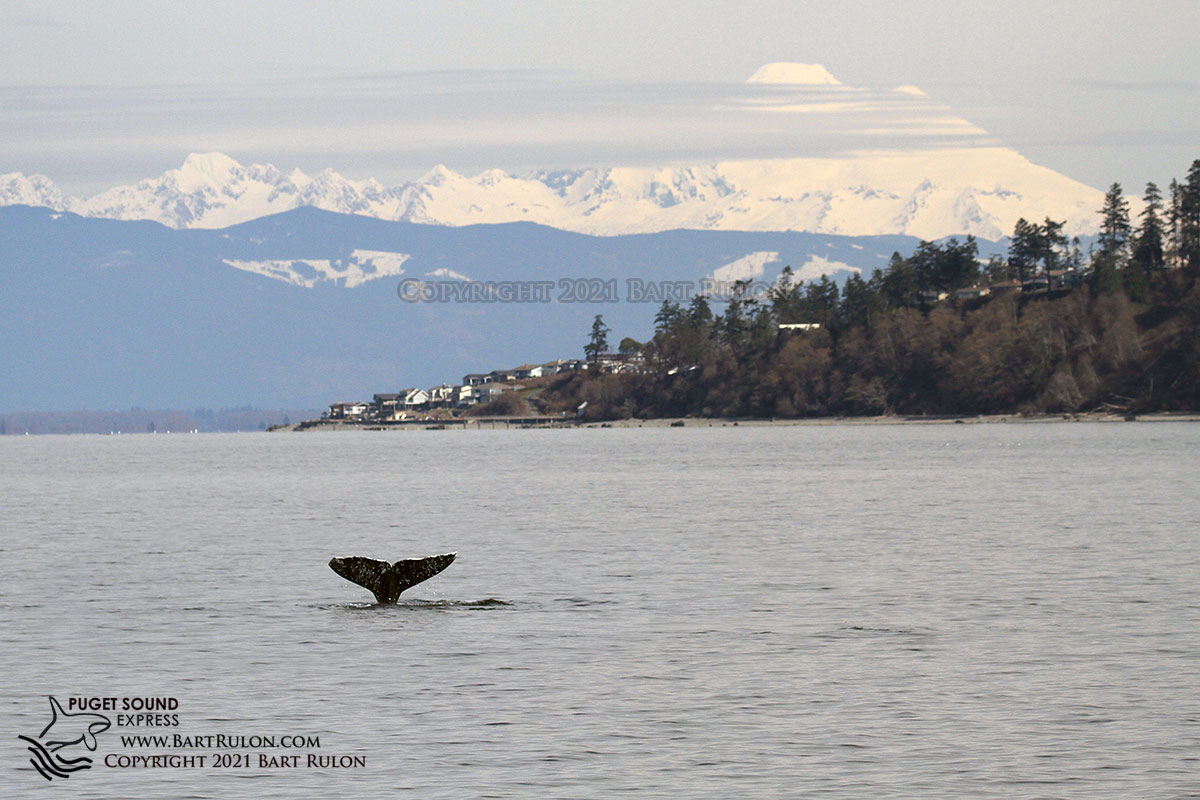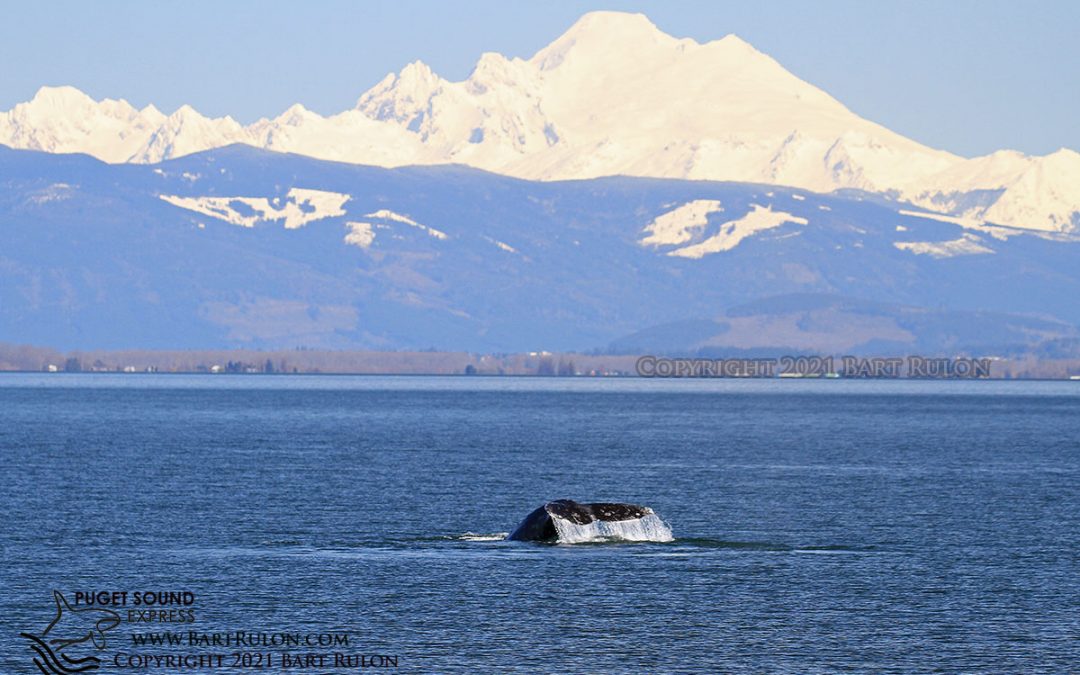We sure had a great opening month for whale watching this year. We’ve had higher than normal numbers of gray whales returning so far and we’ve been blessed with a fair share of orca sightings too! So far we’ve seen 13 different gray whales on our trips including CRC 21, 44, 53, 56, 185, 383, 531, 723, 2249, 2255, 2259, 2261, and 2356. A few other gray whales have also been reported in the area too. It is especially exciting that many of these gray whales are relative newcomers that have decided to come back again after their initial visits to our area in 2019 and 2020. Now that some of these “newbie” whales have come back more than one time we are hopeful that they will become part of our regular “Sounder” group that visits every spring. April tends to be the peak of gray whale watching for us so its possible that we could have even more gray whales returning this month, but we will see. This is an important feeding stop for these gray whales during their migration northward. They arrive very skinny from having not eaten much while they are in the protected lagoons in Baha California, Mexico, where they are focused on mating and calving. Recent research using drone photography has shown that these gray whale’s body condition can improve significantly in the manner of only a few weeks time. Ghost shrimp, or sand shrimp, are believed to be the primary target for these hungry gray whales while they are here and they feed mostly around high tide when the intertidal zone is accessible to them.
Besides having larger numbers of gray whales we’ve also had plenty of transient killer whale sightings too. Since our spring gray whale trips are only 2 1/2 hours long the orcas have to be relatively close to the prime gray whale habitat for us to be able to “double up” with two species in one trip. Luckily transient killer whales also like some of the same waterways as our grays and they have been close by on several occasions for both our Port Townsend and Edmonds trips. So far this year we’ve seen the T46 pod, T65A pod, T77 pod, and the T137 pod. All of those pods are frequent visitors to Puget Sound except for the T77 pod which accompanied the veteran T65A pod when they visited us in March. Enjoy some photos here from our first month of trips. Photographer/ Naturalist, Bart Rulon









